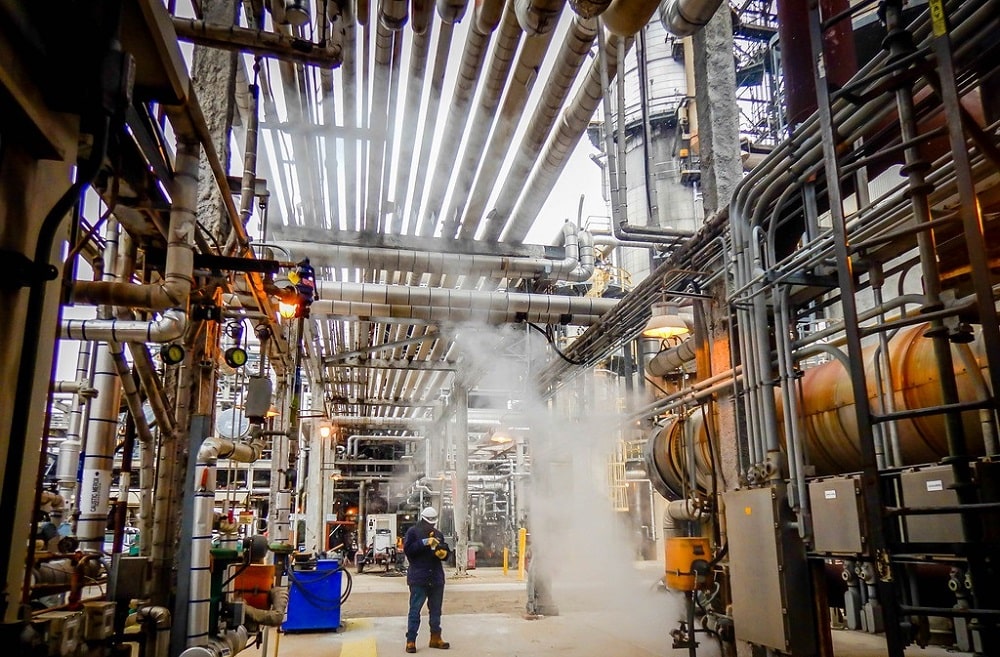By Scott Berglund, Piping Department Manager, Brindley Engineering and Justin Arnold, Inspection Technician, Brindley Engineering
Piping engineering and piping design play an important role in protecting against loss of primary containment. It’s our duty as piping engineers and designers to take into consideration ways to prolong the life of piping systems. Corrosion Under Insulation (CUI) is one of the costliest problems that we come across in our industry. Welcome to Part 5 of Brindley Engineering’s 10-part series on Infrastructure Reliability. In In Part 4 we wrote about level instrumentation. In Part 3 we explored electrical reliability. In Part 2 you read about process utilities, and in Part 1 we wrote about the risk of neglective critical infrastructure and protecting what matters. In Part 5 we will talk about Piping and CUI.
Loss of primary containment caused by CUI
Insulation is required in our industry to retain heat, or as protection for personnel working in and around hot piping. Poor piping design practices and poorly insulated pipe can result in CUI. CUI occurs when water infiltrates the insulation’s protective shielding and saturates the insulation, which accelerates the corrosion effect on the exterior of the pipe.
Detecting CUI
CUI affects primarily carbon and low-alloy steels at temperatures up to 350°F, depending on the material. Corrosion rates can even elevate with increasing metal temperature, depending on the rate of wetting and replenishment of the water, even if it is evaporating quickly at higher temperatures. CUI results in rough, uneven, and pitted appearance typically covered with a loose, flaky scale and is localized to wetted insulation. CUI can be difficult to identify economically because the external surface of the piping is not able to be seen visibly without removing insulation. That is why Brindley Engineering uses experienced teams of engineers and American Petroleum Institute (API) authorized inspectors to identify areas of concern and develops, organizes, and manages the programs to deal with these issues.
BE’s approach to a strong CUI program
Protection from CUI starts with good design and support practices, proper coating system, proper insulation installation practices, and developing a routine pipe inspection program. Brindley Engineering’s Piping and Mechanical teams work together with the client to develop and implement CUI programs, establish design criteria for new piping systems, evaluate and prioritize risks, and providing plans for either maintenance or new construction.
Brindley Engineering identifies high-risk piping systems that are conducive to CUI and applies a risk-based, programmatic approach to arrive at an optimal solution for maintenance activities such as insulation replacement, coating application, pipe support modification and, if required, pipe replacement. CUI inspection programs utilizing industry codes are built into our inspection programs.
Benefits of a CUI program
CUI is an ever-present issue in industrial facilities, but it can be managed in an effective manner by taking a systematic, risk-based approach to plan inspections and execute maintenance activities. Improvements can also be made in new construction or with existing assets over time by steadily improving details such as pipe support configurations, insulation materials, coating systems, etc.
Piping Engineering and Design is not just about creating 3D Models of facilities. Much thought and design practice goes into the longevity of a facility and with a field focused approach and inspection/reliability front and center. BE is here to help prolong the life of the piping systems.


More From This Series:
- Part 1: Infrastructure Reliability – Protecting What Matters
- Part 2: Utilities – Water quality and the effects of impurities on on-stream operability
- Part 3: Electrical – Condition evaluation of critical motors, transformers, and UPS systems
- Part 4: Instrumentation – Level instrumentation and its effects on reliable operation
- Part 6: Tanks – Settling, buckling, and fitness for service assessments
- Part 7: Structures – Structural degradation and the risk of systemic collapse
- Part 8: Fireproofing – Fireproofing degradation, fire safety and corrosion of underlying steel
- Part 9: Cooling Towers – Collapsed cells and effects on cooling water availability
- Part 10: Project Controls – Understanding the big picture in real-time


0 Comments